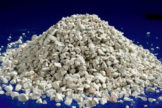
Zeolite Market Covid-19 Impact Analysis, Drivers, Restraints, Opportunities, Threats, Trends, Applications, And Growth Forecast To 2031
-
6365
-
May 2023
-
185
-
-
This report was compiled by Correspondence Linkedin | Detailed Market research Methodology Our methodology involves a mix of primary research, including interviews with leading mental health experts, and secondary research from reputable medical journals and databases. View Detailed Methodology Page
-
Global Zeolite Market Report Overview:
The Zeolite Market is expected to index a valuation of $XX million from a value of $xx registered in 2021. The global Zeolite Market market is slated to index a CAGR of X.X% throughout this forecast timeline.
Impacts of the COVID-19 Pandemic:
Most industries worldwide have been negatively impacted over the last 18 months. This can be attributed to significant disruptions experienced by their respective manufacturing and supply-chain operations as a result of various precautionary lockdowns, as well as other restrictions that were enforced by governing authorities across the globe.
The same applies to the global Zeolite Market market. Moreover, consumer demand has also subsequently reduced as individuals are now more keen on eliminating non-essential expenses from their respective budgets as the general economic status of most individuals have been severely affected by this outbreak.
These aforementioned elements are expected to burden the revenue trajectory of the global Zeolite Market market over the forecast timeline. However, as respective governing authorities begin to lift these enforced lockdowns, the global Zeolite Market market is expected to recover accordingly.
Key Market Segments
Type
- Natural zeolite
- Synthetic zeolite
End Users
- Chemical
- Agriculture
- Petrochemicals
- Water treatment
- Others.
List Major Industry Players That Are Covered in the Zeolite Market Report?
To boost global prominence, businesses encompassed in the Zeolite Market sector are now more engaged with initiating approaches such as targeted marketing, CSR programs, etc. A significantly noticeable trend that is being observed across the board is that these companies now aim to manage a given business-related activity in a country that provides favorable policies.
Doing so enables these businesses to lower costs while employing industry specialists for every critical juncture of their respective organizations. Authorities in emerging countries such as India, China, Taiwan, Indonesia, etc., are enacting policies to attract foreign investors to the respective manufacturing sectors by lowering trade tariffs and duties to generate more jobs.
This report analyzes the Zeolite Market market in a comprehensive manner, outlining its competitive landscape, possible growth opportunities, and potential pitfalls, offering information on numerous market players, including:
- Tosoh Corporation
- BASF SE
- Interra Global Corporation
- Arkema Group
- Zeochem AG
- Zeox Corporation
- Honeywell International Inc
- Clariant
- Eurecat
- Yingkou Zhongbao molecular sieve co
- .ltd
- KNT Group
- Dalian Haixin Chemical Industrial Co. Ltd
Furthermore, several key market players in the global Zeolite Market sector are now more focused on setting-up effective joint ventures, acquisitions, and/or collaborations to expand their respective consumer bases.
By doing so, they stand to boost their given target bases by being able to cater to them on both a global and domestic level. In conjunction with favorable prospects emerging from developing nations in the Asia-Pacific region such as India, China, Taiwan, Indonesia, etc., this element is anticipated to create a surge in business prospects for concerned players throughout this forecast period.
What are the Key Regions of Operation for the Zeolite Market?
The key areas of operation for the global Zeolite Market market are:
- North America
- Europe
- Asia Pacific
- Latin America
- MEA
Key Factors Covered in the Zeolite Market Report:
- A comprehensive overview of the global Zeolite Market market
- Detailed information on factors that will fuel or hamper market growth prospects for the global Zeolite Market market
- Potential market CAGR projections over the forecast period
- Precise market size estimations of the Zeolite Market industry
- Accurate upcoming trends and consumer behavior pattern predictions
- Potential expansion prospects for the Zeolite Market market
- A thorough analysis of the Zeolite Market market?s competitive landscape
Attribute Report Details Market Size Ask For Market Size Growth Rate Ask For Growth Rate Key Companies Ask For Companies Report Coverage Revenue analysis, Competitive landscape, Key company analysis, Market Trends, Key segments, Distribution Channel, Market Dynamics, COVID-19 Impact Analysis and more… Historical Data Period 2015-2020 Base Year 2022 Forecast Period 2022-2031 Region Scope North America, Europe, Asia-Pacific, South America, Middle East & Africa Country Scope United States, Canada and Mexico, Germany, France, UK, Russia and Italy, China, Japan, Korea, India and Southeast Asia, Brazil, Argentina, Colombia etc.Saudi Arabia, UAE, Egypt, Nigeria and South Africa Revenue in US$ Mn *NOTE - All statements of fact, opinion, or analysis expressed in any reports published, are those of concerned analysts. They do not necessarily reflect any formal position or view of Marketresearch.Biz.
-
-
- Tosoh Corporation
- BASF SE
- Interra Global Corporation
- Arkema Group
- Zeochem AG
- Zeox Corporation
- Honeywell International Inc
- Clariant
- Eurecat
- Yingkou Zhongbao molecular sieve co
- .ltd
- KNT Group
- Dalian Haixin Chemical Industrial Co. Ltd




